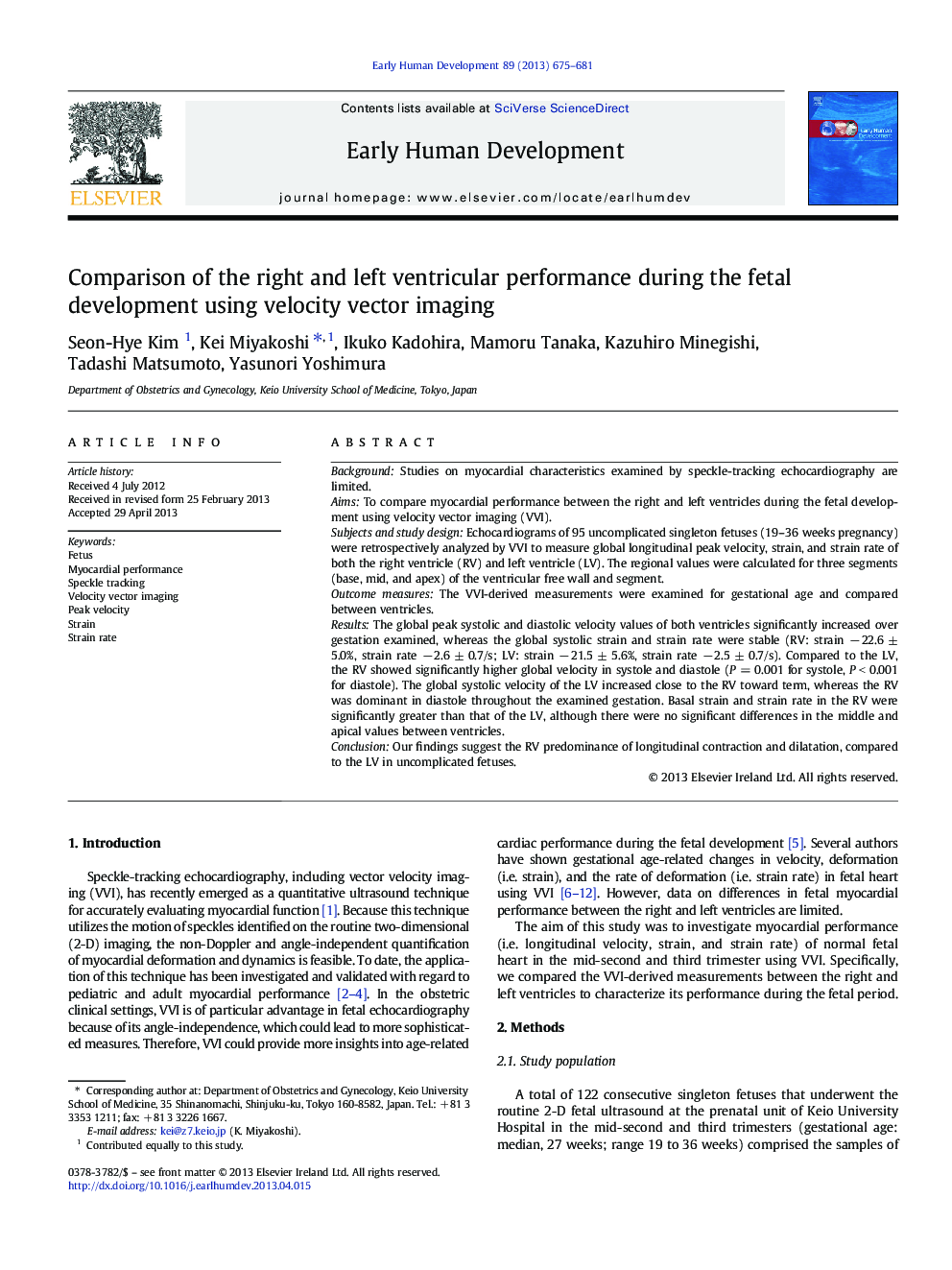| Article ID | Journal | Published Year | Pages | File Type |
|---|---|---|---|---|
| 6172301 | Early Human Development | 2013 | 7 Pages |
BackgroundStudies on myocardial characteristics examined by speckle-tracking echocardiography are limited.AimsTo compare myocardial performance between the right and left ventricles during the fetal development using velocity vector imaging (VVI).Subjects and study designEchocardiograms of 95 uncomplicated singleton fetuses (19-36 weeks pregnancy) were retrospectively analyzed by VVI to measure global longitudinal peak velocity, strain, and strain rate of both the right ventricle (RV) and left ventricle (LV). The regional values were calculated for three segments (base, mid, and apex) of the ventricular free wall and segment.Outcome measuresThe VVI-derived measurements were examined for gestational age and compared between ventricles.ResultsThe global peak systolic and diastolic velocity values of both ventricles significantly increased over gestation examined, whereas the global systolic strain and strain rate were stable (RV: strain â 22.6 ±5.0%, strain rate â 2.6 ± 0.7/s; LV: strain â 21.5 ± 5.6%, strain rate â 2.5 ± 0.7/s). Compared to the LV, the RV showed significantly higher global velocity in systole and diastole (P = 0.001 for systole, P < 0.001 for diastole). The global systolic velocity of the LV increased close to the RV toward term, whereas the RV was dominant in diastole throughout the examined gestation. Basal strain and strain rate in the RV were significantly greater than that of the LV, although there were no significant differences in the middle and apical values between ventricles.ConclusionOur findings suggest the RV predominance of longitudinal contraction and dilatation, compared to the LV in uncomplicated fetuses.
